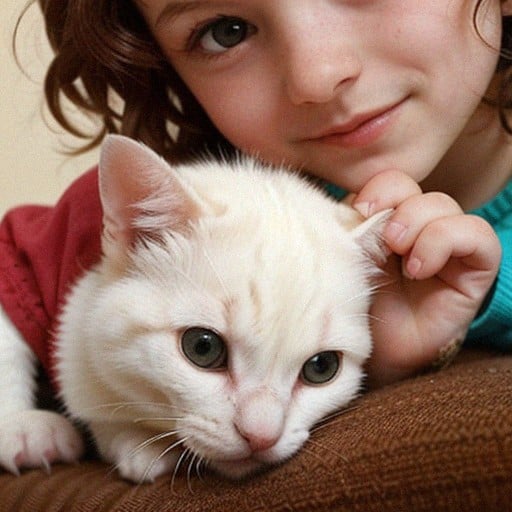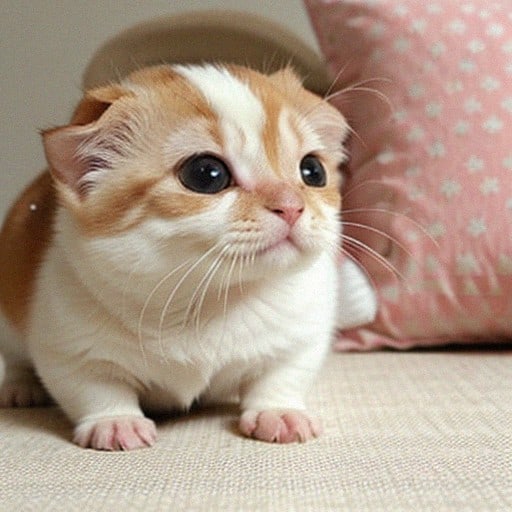Low-Maintenance Small Pets For Kids – Perfect For Busy Parents
Are your kids constantly begging for a furry companion? Look no further! This comprehensive guide will help you choose the perfect small pet that will bring joy and companionship to your little ones.
From cuddly hamsters to playful guinea pigs, there are an array of small pets that are perfect for kids. Not only are these pint-sized creatures adorable, but they also teach responsibility, empathy, and provide hours of entertainment. This guide will walk you through all the factors to consider before bringing home a small pet, including space requirements, grooming needs, and lifespan. *You’ll discover tips and tricks for creating a safe and comfortable environment for your new furry friend, as well as advice on the best ways to handle and interact with them.
The Best Small Pets for Kids
Looking for the perfect small pet for your child? Guinea pigs are gentle companions that are sure to win their hearts. These furry critters are known for their sociable nature and love to be handled. If you’re looking for something more exotic, consider bearded dragons. These unique reptiles make fascinating buddies and can even be trained to do tricks! For those seeking an even more unusual friend, the African pygmy hedgehog is a great choice. With their prickly quills and adorable faces, they’re sure to captivate any child’s imagination.
Guinea Pigs: The Gentle Companions
Transitioning into the world of small pets can be an exciting journey for kids. If you’re looking for an adorable and gentle companion for your child, look no further than guinea pigs. These delightful creatures are known for their sweet nature and make perfect friends for children.
Guinea pigs are small rodents with round bodies and soft, fluffy fur that comes in a variety of colors and patterns. Their expressive eyes and twitching noses add to their charm, making them irresistible to both kids and adults alike. These sociable creatures thrive on companionship and love to interact with their human friends, often squeaking with delight when they see their favorite people approaching.
One of the most endearing traits of guinea pigs is their docile nature.
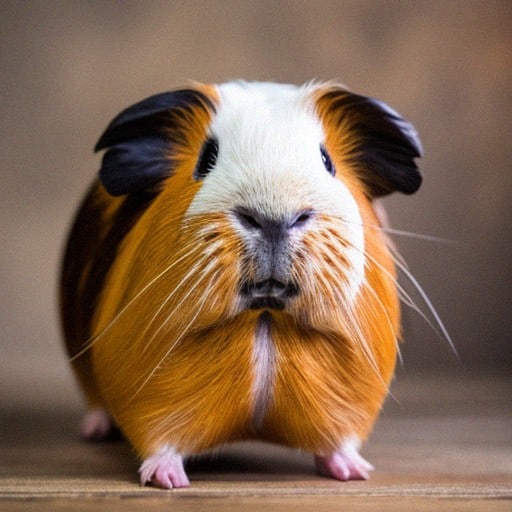
Bearded Dragons: The Exotic Buddies
If you’re looking for a pet that will make heads turn and spark curiosity, bearded dragons are the perfect choice. These exotic buddies bring a touch of the wild into your home with their unique appearance and fascinating behavior. With their scaly bodies, striking colors, and distinctive beard-like spines, bearded dragons are truly a sight to behold.
One of the most captivating aspects of these reptiles is their calm and friendly nature. Despite their fearsome appearance, bearded dragons are surprisingly gentle and social creatures. They enjoy being handled and are known for forming strong bonds with their human companions.
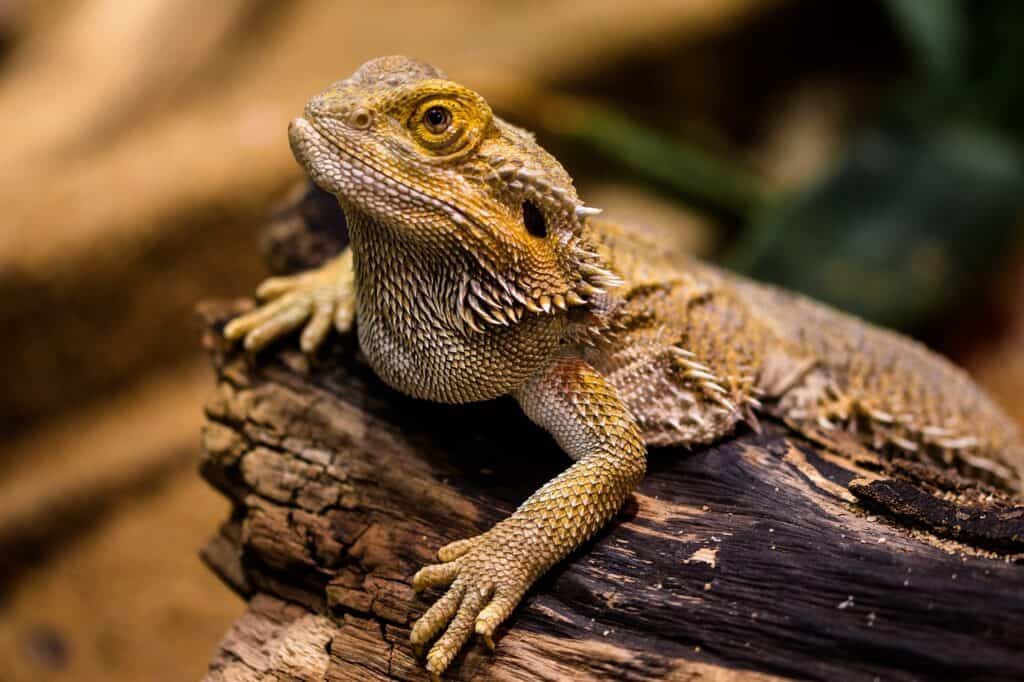
African Pygmy Hedgehogs: The Unusual Friends
If you’re looking for a small pet that is truly unique, then African Pygmy Hedgehogs might just be the perfect choice for your child. These captivating creatures have become increasingly popular in recent years due to their adorable appearance and intriguing personalities. With their tiny bodies covered in spiky quills, they resemble miniature, living pincushions. African Pygmy Hedgehogs are known for their friendly nature, making them great companions for kids. They may not be as cuddly as guinea pigs, but their playful and curious demeanor more than makes up for it.
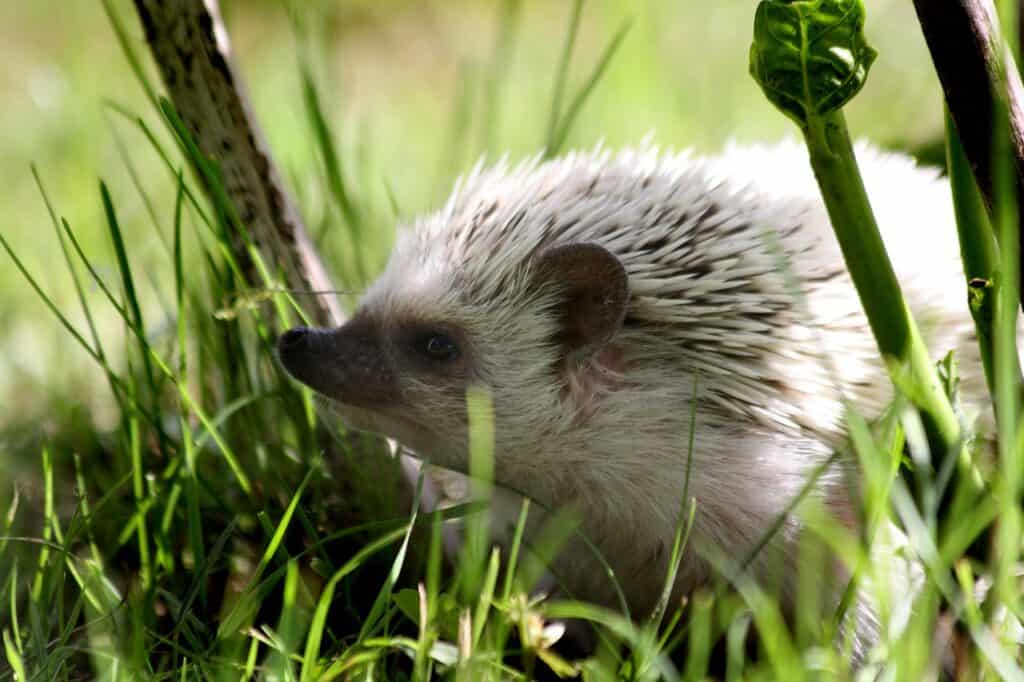
Why Corn Snakes Make Great Pets
Why corn snakes make great pets? Well, let me tell you. These fascinating creatures are not just visually appealing with their vibrant colors and unique patterns, but they are also incredibly low-maintenance. Understanding corn snakes is essential to providing them with proper care. From their diet to their habitat, they are relatively easy to care for. Caring for your corn snakes involves providing them with a suitable enclosure, maintaining the temperature and humidity levels, and ensuring their health and well-being. Additionally, engaging in fun activities with corn snakes such as gentle handling and creating interactive environments can strengthen the bond between you and your slithery companion.
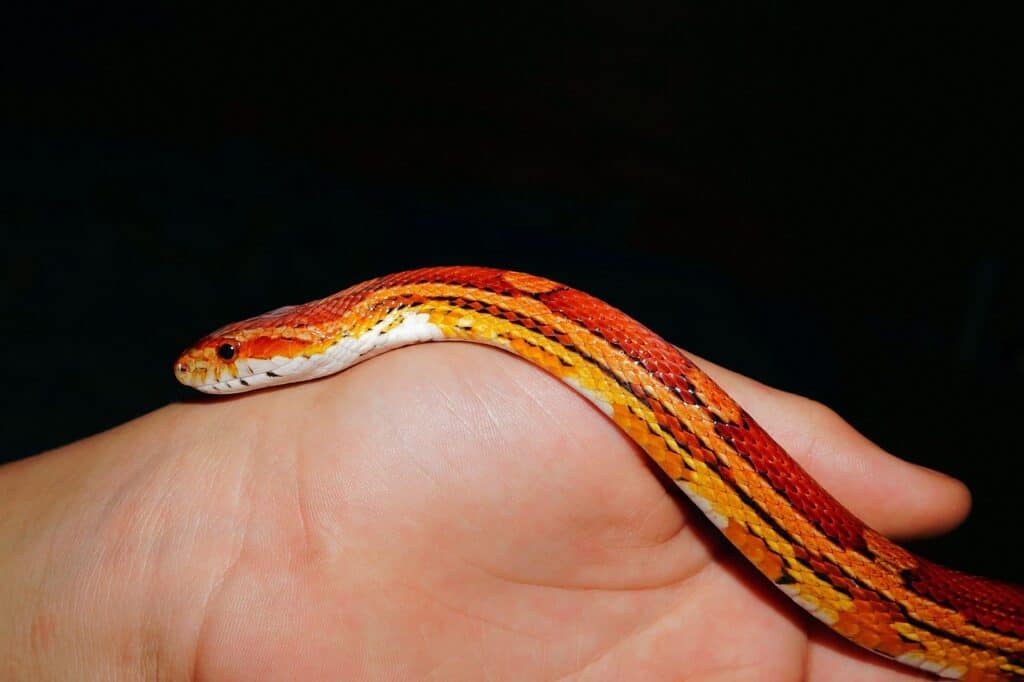
Understanding Corn Snakes
Now that we’ve explored some of the best small pets for kids, let’s dive into the fascinating world of corn snakes. These magnificent creatures are not only beautiful to look at, with their vibrant colors and sleek patterns, but they also make great companions.
Corn snakes are a type of non-venomous snake that can be found throughout North America. They are known for their slender bodies and unique markings, which resemble the kernels of corn. One of the most remarkable things about corn snakes is their ability to squeeze through tight spaces due to their flexible bodies. This allows them to explore their surroundings and find cozy hiding spots.
When it comes to temperament, corn snakes are generally docile and easy to handle.
Caring for Your Corn Snakes
If you’re looking for a pet that is low-maintenance yet fascinating, caring for your Corn Snakes is an absolute delight. These beautiful creatures are known for their vibrant colors and slender bodies, making them a captivating addition to any household. Ensuring the well-being of your Corn Snakes is a straightforward process that requires minimal effort. Regular feeding is essential for their health, and watching them gracefully devour their prey is a sight to behold. Maintaining a clean and comfortable habitat is also crucial, providing them with a cozy environment where they can thrive. Handling your Corn Snakes with care and gentleness is important to build trust and create a strong bond.
Fun Activities with Corn Snakes
Now that you understand the joys of owning a corn snake and have learned how to properly care for them, it’s time to explore all the fun activities you can enjoy with your scaly friend. Immerse yourself in the world of reptiles by setting up a mini jungle enclosure for your corn snake. Decorate it with lush green foliage, sturdy branches, and a small rock formation for your snake to explore and hide in. Watch as your corn snake gracefully slithers through its natural habitat, its vibrant scales glistening under the warm lights.
Engage in interactive play with your corn snake by using a variety of toys.
Birds as Pets: What You Need to Know
If you’re considering a pet bird for your child, there are a few things to keep in mind. Types of Pet Birds Suitable for Kids include budgies and cockatiels, which are known for their friendly and playful nature. These small birds are easy to care for and can be a great introduction to pet ownership. When Caring for Your Pet Bird, it’s important to provide a spacious cage, a balanced diet, and plenty of mental stimulation. Did you know that some birds can mimic human speech?
Types of Pet Birds Suitable for Kids
If you’re considering getting a pet bird for your child, you’ll want to choose a species that is both gentle and easy to care for. One such bird is the Budgerigar, also known as the Budgie. These small parakeets are incredibly popular pets for kids due to their friendly nature and vibrant colors. With their cheerful chirps and playful personalities, Budgies can bring endless joy and companionship to your child’s life. Another great option is the Cockatiel, with its striking crest and melodious songs. These birds are highly sociable and thrive on interaction, making them ideal companions for children.
Caring for Your Pet Bird
Transitioning from the scaly world of corn snakes, let’s now take flight into the fascinating realm of birds as pets. Caring for your pet bird is an art that requires patience, dedication, and a keen eye for detail. Ensuring their well-being involves creating a comfortable environment for them to thrive. From the moment you bring your feathered friend home, it is crucial to provide them with a spacious cage, adorned with sturdy perches and engaging toys. Regular cleaning of their enclosure is essential, as birds are known for their cleanliness. Additionally, maintaining a balanced diet that includes a variety of fresh fruits, vegetables, and high-quality pellets is vital.
Fun Facts About Birds
Birds, with their colorful feathers and melodious songs, are truly fascinating creatures. Fun facts about birds will leave you amazed at the wonders of the avian world. Did you know that some species of pet birds can live up to 80 years? It’s incredible to think that a bird could be a lifelong companion! Another interesting fact is that certain birds, such as African Grey Parrots, are known for their exceptional intelligence and ability to mimic human speech. Imagine having a feathered friend who can hold a conversation with you! Additionally, birds have an incredible sense of direction, often using the Earth’s magnetic field to navigate their long migration journeys.
Unusual Pets: Sugar Gliders and Leopard Geckos
Looking for a unique and fascinating pet? Look no further than sugar gliders and leopard geckos! These pocket-sized pets are sure to capture your heart with their adorable charm and intriguing behaviors. Leopard geckos, with their cool reptilian appearance, are a popular choice for those looking to own a reptile. On the other hand, sugar gliders are small, marsupial mammals that will melt your heart with their cuteness. But how do you care for these unusual pets?
Sugar Gliders: The Pocket-Sized Pets
Transition: Now that we’ve explored the world of birds as pets, let’s delve into the realm of more unusual companions. If you’re looking for a unique and adorable pet, you might consider sugar gliders. These tiny marsupials are often called “pocket-sized pets” because of their small size and endearing nature.
Sugar gliders are native to Australia and Indonesia, and they have quickly gained popularity as pets around the world. With their large, round eyes, fluffy tails, and gliding abilities, it’s hard not to fall in love with these charming creatures.
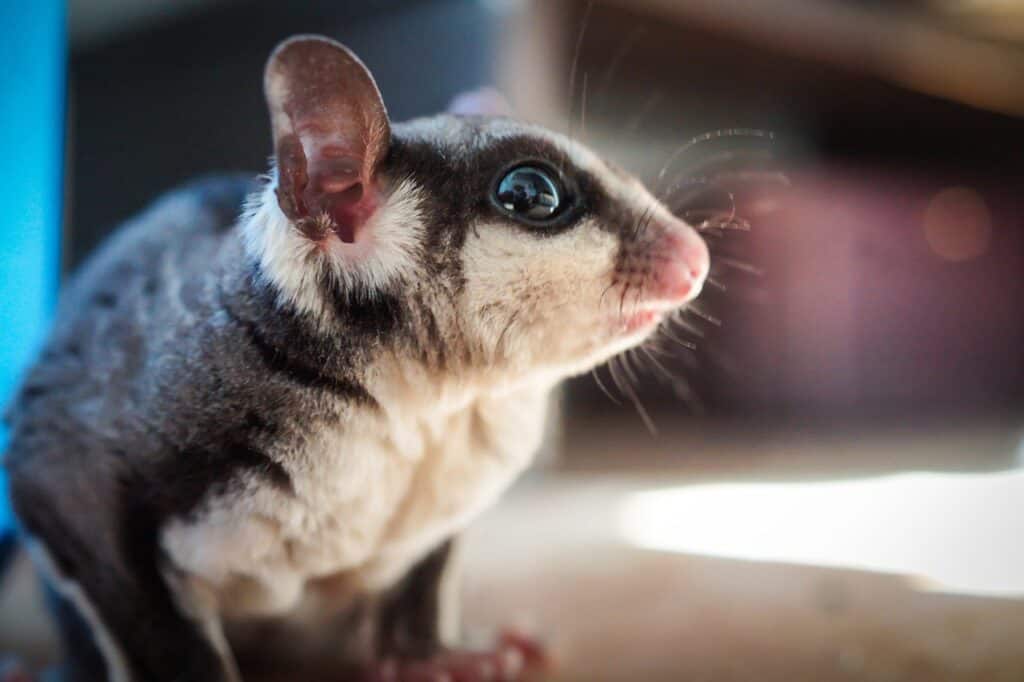
Leopard Geckos: The Cool Reptiles
Leopard geckos are fascinating creatures that make for unique and captivating pets. With their striking appearance and cool demeanor, they are sure to capture the attention of anyone who encounters them. These small reptiles have a distinctive pattern of spots and bumpy skin that resembles the fur of a leopard, hence their name.
Unlike other reptiles, leopard geckos are known for their gentle nature and docile temperament. They are not aggressive and can be easily handled without fear of being bitten. Their soft, velvet-like skin and captivating eyes make them irresistible companions for reptile enthusiasts.
Leopard geckos are crepuscular creatures, meaning they are most active during dawn and dusk.
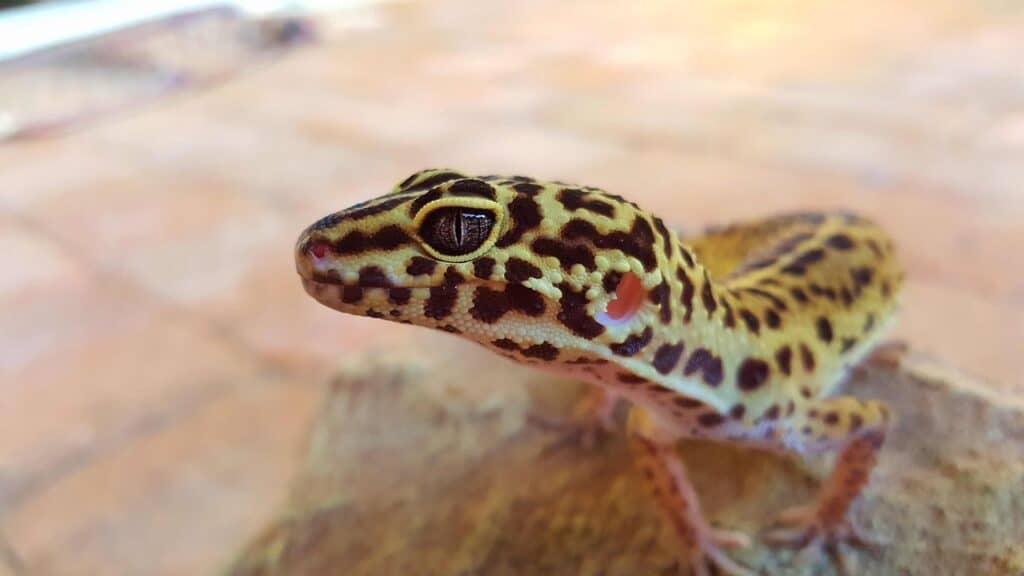
How to Care for Unusual Pets
Now that we’ve explored the world of birds as pets, let’s turn our attention to some more unique companions: Sugar Gliders and Leopard Geckos. These pocket-sized pets and cool reptiles make for fascinating additions to any household.
However, caring for unusual pets requires special attention and knowledge. Whether you choose a Sugar Glider or a Leopard Gecko, understanding their needs is crucial to their well-being.
For Sugar Gliders, a spacious cage with plenty of branches and hiding spots is essential. They are nocturnal creatures, so make sure their environment is dark and quiet during the day.
Small Pets for Kids of Different Ages
When it comes to small pets for kids of different ages, it’s important to consider the ideal pets for each age group. For small kids, hamsters are a popular choice due to their compact size and low maintenance needs. They provide a great opportunity for kids to learn about responsibility. As kids age, rabbits become more suitable pets for pre-teens as they are gentle and can be easily handled. Teenagers may prefer the companionship of guinea pigs or gerbils as they require a bit more interaction and care. Whatever the age, these small pets can bring joy and teach valuable life lessons.
Ideal Pets for Young Kids
Transitioning from the world of unusual pets to the realm of pets for kids of different ages, we now embark on a journey to discover the ideal companions for our young, curious souls. For small kids, ideal pets are those that ignite their imaginations and teach them responsibility.
Picture a fluffy rabbit hopping through a grassy meadow, captivating the wide-eyed wonder of a child. The softness of its fur invites gentle caresses, while its twitching nose and floppy ears elicit giggles of delight. With their gentle nature and low maintenance, rabbits make perfect companions for small kids.
As they stroke the rabbit’s velvety ears, these young children learn about empathy and nurturing, forming a bond that will stay with them for years to come.
Perfect Pets for Pre-teens
Pre-teens are at that wonderful age where they are curious and eager to learn. They are ready to take on more responsibility and are looking for a pet that can keep up with their energy. One ideal pet for pre-teens is the gerbil.
These small, furry creatures are known for their playful nature and are great for kids ages 8-12. With their soft fur and bright eyes, gerbils make the perfect cuddly companion. They are social animals that love to interact with their owners, providing endless hours of entertainment.
Suitable Pets for Teenagers
Now that we’ve covered ideal pets for young kids and perfect pets for pre-teens, let’s dive into suitable pets for teenagers. Teenagers are often looking for pets that are more independent and can handle a bit more responsibility.
For teenagers who have a passion for reptiles, a ball python could be the perfect fit. With their striking patterns and docile nature, ball pythons make for fascinating and low-maintenance pets. They require a tank with proper heating and humidity, but they are generally easy to care for. For teenagers who prefer furry companions, a rat might be a great choice. Rats are highly intelligent, social creatures that can be trained and interacted with.
How Small Pets Teach Great Parenting Lessons
Responsibility and caring go hand in hand when it comes to raising small pets. These little creatures rely on their owners for their every need, teaching us the importance of being responsible and attentive. Understanding and patience are crucial in providing a nurturing environment for our furry friends. We must take the time to learn their behaviors, preferences, and needs. Additionally, time-management and prioritization are essential skills that small pets teach us. We must allocate time for feeding, grooming, and play, while also managing our own responsibilities and commitments. In these ways, small pets offer great lessons in parenting, preparing us for the primary sidebar of raising children.
Responsibility and Caring
As parents, we all want our children to grow up to be responsible and caring individuals. One of the best ways to teach them these important qualities is through the care of small pets. Small pets require a lot of attention and care, and this responsibility falls on the shoulders of your child. By taking care of a small pet, your child will learn the importance of being responsible for another living being.
Imagine your child gently holding a tiny hamster in their hands, carefully feeding it and making sure it has fresh water every day. They clean its cage, provide it with a cozy bed, and spend time playing with it. Through this hands-on experience, *your child will develop a sense of responsibility and caring that will extend beyond the realm of pet care.
Understanding and Patience
As children grow and develop, it becomes increasingly important for them to learn essential life skills that will serve them well in the future. Small pets can play a significant role in teaching children about responsibility and caring, as well as fostering an understanding of patience.
When a child takes on the responsibility of caring for a small pet, they learn that their actions directly impact the well-being of another living creature. Feeding, cleaning, and providing a safe environment for their pet become daily tasks that require attention and dedication. This understanding helps children develop a sense of responsibility and empathy, as they realize that their pet relies on them for its health and happiness.
*Patience is another valuable lesson that small pets can teach children.
Time-Management and Prioritization
Transition: As parents, we often find ourselves juggling multiple responsibilities and trying to manage our time efficiently. Small pets can teach great parenting lessons, including the importance of time-management and prioritization.
Time-Management and Prioritization: Imagine a child carefully organizing their day, just like they would for their small pet. They diligently allocate time for feeding, cleaning, and playing. These tasks become part of their routine, teaching them valuable skills in time-management and prioritization.
By taking care of a small pet, children learn to allocate their time wisely. They understand that feeding their pet takes precedence over watching TV or playing video games. They become skilled at managing their time, ensuring they can fulfill their pet’s needs while still completing their other responsibilities.
The Health Benefits of Having Small Pets
Having small pets can bring a variety of health benefits. Reduced stress and anxiety is one of the top advantages. The simple act of stroking a soft bunny or watching fish swim peacefully can provide a sense of calm and relaxation. Additionally, small pets can encourage increased physical activity. Whether it’s playing with a playful kitten or taking a dog for a walk, these activities help keep us active and fit. Lastly, small pets can boost our immunity. Studies have shown that interacting with animals can strengthen our immune system, reducing the risk of medical risks and illnesses such as heat exhaustion.
Reduced Stress and Anxiety
When it comes to finding ways to reduce stress and anxiety, small pets can be a wonderful solution. The presence of these tiny companions can have a calming effect on our minds and bodies, helping to melt away the worries of the day. Imagine coming home after a long, hectic day at work, only to be greeted by the gentle purring of a contented kitten or the soothing chirping of a cheerful canary. Just the simple act of watching them go about their daily routines can provide a sense of peace and tranquility.
Studies have shown that interacting with small pets can release endorphins, hormones known for their ability to elevate mood and reduce stress.
Increased Physical Activity
In addition to the emotional benefits of having a small pet, increased physical activity is another advantage that comes with owning one. These small creatures can be quite active, providing their owners with ample opportunities to engage in physical play. Whether it’s playing fetch with a tiny hamster or watching a nimble gerbil scurry around its cage, these activities can keep both pet and owner on their toes. Small pets can also be quite curious and adventurous, often exploring their surroundings with boundless energy. As a result, owners find themselves accompanying their pets on mini expeditions around the house or even outdoors. These moments of play and exploration create a fun and active lifestyle, which ultimately leads to improved physical health for both the pet and their human companion.
Boosted Immunity
In addition to the other health benefits of having small pets, such as reduced stress and increased physical activity, owning a small pet can also boost your immunity. When you interact with your furry or scaly friend, you are exposed to a variety of microorganisms that can actually strengthen your immune system.
Exposure to these microorganisms can help your body build up a defense against common illnesses and allergies. Studies have shown that individuals who have regular contact with pets have a lower risk of developing respiratory infections and allergies.
Whether it’s the gentle purring of a kitten or the soft snuffling of a hamster, the presence of a small pet in your life can provide a natural boost to your immune system, helping you stay healthier and happier.
Greek Tortoises: The Ancient Pets
Greek tortoises are fascinating creatures that have been kept as pets for centuries. Understanding Greek tortoises is key to providing them with the care they need. These ancient pets have unique characteristics and behaviors that make them truly special.
Caring for Greek tortoises involves creating a suitable habitat, providing a balanced diet, and ensuring their overall well-being. Fun activities with Greek tortoises can include creating obstacle courses, taking them for supervised outdoor exploration, and even teaching them simple tricks.
By following these guidelines, you can develop a strong bond with your Greek tortoise and provide them with a happy and fulfilling life.
Understanding Greek Tortoises
Greek Tortoises, also known as Testudo graeca, are fascinating creatures that have been kept as pets for centuries. Native to the Mediterranean region, these tortoises have a unique appearance that sets them apart from other species. With their oval-shaped shells and distinctive patterns, they are a sight to behold.
One of the most interesting things about Greek Tortoises is their incredible longevity. These ancient creatures can live for over a hundred years, making them perfect companions for those seeking a long-term pet. Their eight signs of good health are easy to spot, as they display vibrant colors, have clear eyes, and move with agility.
Caring for Greek Tortoises
Understanding Greek Tortoises is crucial when it comes to caring for these ancient pets. Greek Tortoises, also known as Testudo graeca, are small to medium-sized tortoises native to the Mediterranean region. They have a distinct appearance with a high-domed shell and yellowish-brown coloration.
These tortoises are herbivores and have a lifespan of up to 100 years. Taking care of Greek Tortoises requires attention to their specific needs. First, it is important to provide them with a spacious enclosure that mimics their natural habitat, including a mix of soil, rocks, and plants. Second, maintaining the right temperature and humidity levels is essential for their well-being.
Fun Activities with Greek Tortoises
Looking for some fun activities to do with your Greek Tortoise? Look no further! Greek Tortoises are fascinating creatures that can bring joy and excitement to your life. These ancient pets may not be as cuddly as a fluffy dog or playful as a curious cat, but they have their unique charm that can captivate any animal lover.
One of the fun activities you can enjoy with your Greek Tortoise is setting up a mini obstacle course. Create a maze-like structure using small rocks, wooden blocks, and tunnels. Watch as your tortoise navigates through the course, using its slow and steady pace to conquer each challenge. It’s a delight to witness their determination and focus as they maneuver through the obstacles.
Another engaging activity is feeding time.
A Deeper Look at Chinchillas and Ferrets
Chinchillas: The Soft and Fluffy Pets have gained popularity among pet owners for their adorable appearance and delightful personality. With their luxurious fur and playful nature, chinchillas make wonderful companions. However, ferrets:1 are also captivating creatures that bring joy and curiosity into our lives. These inquisitive playmates are known for their boundless energy and mischievous antics. Caring for Chinchillas and Ferrets requires a responsible approach to ensure their well-being. From providing proper nutrition to creating safe and stimulating environments, it’s important to prioritize their health and happiness.
Chinchillas: The Soft and Fluffy Pets
As we move on from the fascinating world of Greek Tortoises, let’s now turn our attention to a whole different kind of pet – the Chinchillas: The Soft and Fluffy Pets. With their irresistibly soft fur and adorable round bodies, chinchillas are undoubtedly one of the most charming pets to have.
Native to the Andes Mountains in South America, these petite creatures are renowned for their luxurious coats, which come in various shades including gray, beige, and even black. Their fur is so dense that it creates an illusion of a cloud-like texture, inviting you to run your fingers through it. As playful as they are cuddly, chinchillas love to hop and leap around, showcasing their agility and boundless energy.
Ferrets: The Inquisitive Playmates
As we delve into the world of chinchillas and ferrets, let’s first take a closer look at ferrets: the inquisitive playmates. With their mischievous eyes and boundless energy, ferrets are a joy to have as pets.
These adorable creatures possess an insatiable curiosity that will keep you on your toes and fill your days with laughter. Ferrets love to explore every nook and cranny of your home, their small bodies wriggling with excitement as they investigate every hidden corner.
Their sleek, slender bodies and soft fur make them a delight to hold and cuddle. Their playfulness knows no bounds, and they will happily engage in games of chase, pouncing on their toys with gusto.
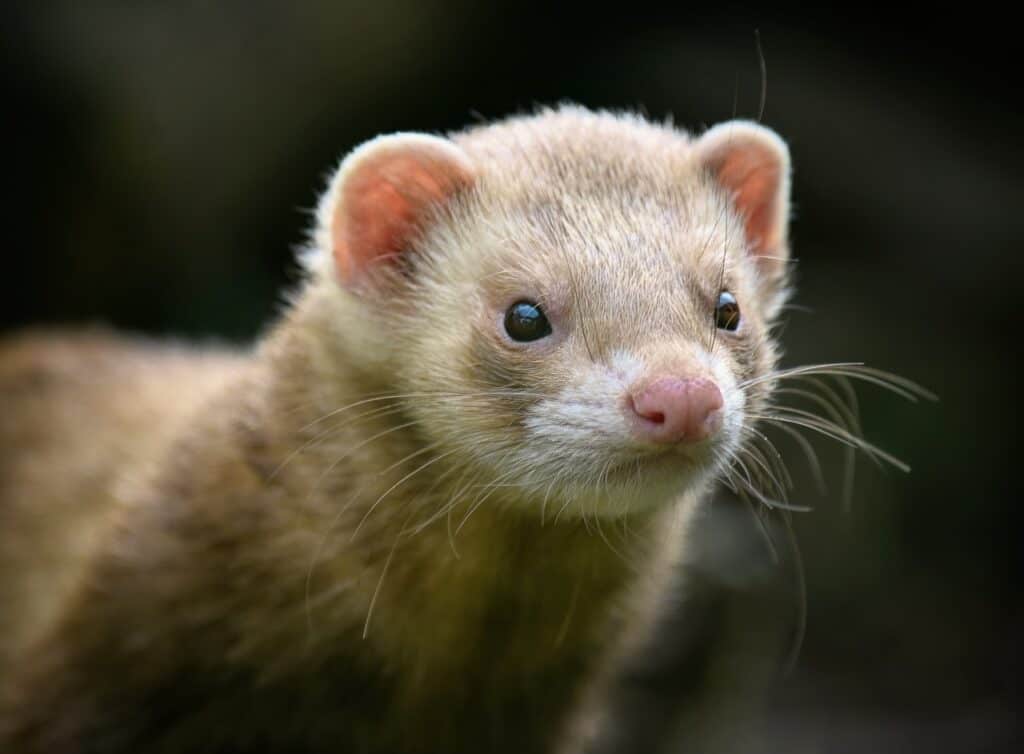
Caring for Chinchillas and Ferrets
As we dive into the world of small and unique pets, let’s shift our focus to the adorable chinchillas and curious ferrets. These furry companions bring joy and entertainment to any home. Caring for chinchillas and ferrets requires a special touch and attention to detail.
Chinchillas: The Soft and Fluffy PetsChinchillas are known for their soft, dense fur that feels like a cloud beneath your fingertips. These gentle creatures thrive when provided with a comfortable and spacious habitat. Regular dust baths are essential for chinchillas, as it helps maintain their luxurious fur and keeps their skin healthy.
Ferrets: The Inquisitive PlaymatesFerrets, on the other hand, are mischievous little explorers.
The Benefits of Having Small Pets
Having small pets can bring about a myriad of benefits that often go underappreciated. These furry companions have a unique ability to improve our emotional well-being, providing comfort and companionship during times of stress or loneliness.
They also enhance our social skills, as their presence can spark conversations and create connections with others who share a love for animals. Moreover, small pets foster a love for nature, allowing us to appreciate the beauty and intricacies of the animal kingdom.
Whether it’s a playful kitten or a curious hamster, these small creatures have a way of brightening our day and bringing joy into our lives.
Improved Emotional Well-being
Transitioning from the fascinating world of chinchillas and ferrets, let’s now explore the underappreciated benefits of having small pets. One of the remarkable advantages is the improved emotional well-being that comes with these pint-sized companions.
Picture this: after a long, tiring day, returning home to be greeted by the joyful squeaks of your pet hamster. The act of simply observing their playful antics can bring a sense of tranquility and contentment to your weary mind. Small pets have a unique ability to lift your spirits and provide comfort with their adorable presence.
Their innocence and unconditional love create a bond that goes beyond words. They become trusted confidants, allowing you to freely express your emotions without judgment.
Enhanced Social Skills
Transitioning from the fascinating world of chinchillas and ferrets, it’s time to explore the enhanced social skills that come with having small pets. These pint-sized companions have a unique ability to bring people together and foster meaningful connections.
Imagine a scenario where a group of friends gathers at a park, each of them accompanied by their tiny furry friends. As they playfully scurry around, people’s ability to interact with one another is greatly enhanced. The adorable antics of these small creatures spark laughter and create a shared sense of joy among the group.
Furthermore, small pets can even foster conversations among strangers. Imagine walking down the street with your pocket-sized pal perched on your shoulder, captivating the attention of passersby.
Fostered Love for Nature and Animals
As we have seen, owning a small pet like a chinchilla or a ferret can bring numerous benefits to our lives. But one of the most beautiful outcomes of having these little companions is how they foster a deep love and appreciation for nature and animals.
By having a small pet, we get a glimpse into the intricate world of these creatures. We witness their natural behaviors, from the playful antics of a chinchilla to the curious exploration of a ferret. This firsthand experience kindles our curiosity and ignites a sense of wonder about the natural world.
*As we care for our small pets, we develop a stronger bond with them.
Debunking Myths About Small Pets
Small pets are often seen as low maintenance, but this is a common misconception. Firstly, small pets like hamsters and rabbits require specific care and attention, including a proper diet and clean living environment.
Secondly, not all small pets are suitable for young children. While some may be kid-friendly, others may bite or scratch if mishandled. Lastly, small pets, just like any other animal, need regular vet visits to ensure their health and well-being.
Don’t fall for the myths surrounding small pets. Take the time to research and understand their needs before bringing them into your home.
Myth: Small Pets are Low Maintenance
While small pets can bring joy and companionship into our lives, it’s important to debunk the myths surrounding their care. Myth: Small Pets are Low Maintenance. Contrary to popular belief, small pets require just as much care and attention as larger animals.
From setting up their habitats to providing daily feeding and cleaning, the responsibilities of owning a small pet can be quite demanding. Many global corporations have established supply chains for pet products, including specialized food, bedding, and toys, to cater to the needs of these furry companions.
It’s essential to understand that small pets are not low-maintenance pets. They require love, time, and effort from their owners to thrive and live a healthy life.
Myth: All Small Pets are Kid-Friendly
While small pets can bring joy and companionship to our lives, it is important to debunk the myth that all small pets are kid-friendly. It is true that some small pets, such as hamsters and gerbils, can be suitable for children. However, it is essential to consider the temperament and needs of each individual small pet before assuming they are suitable for kids.
Hamsters, for example, are generally docile creatures, but they have delicate bodies that can be easily injured by rough handling. Similarly, gerbils have a tendency to nip when they feel threatened or scared. Rabbits, on the other hand, may appear cuddly and cute, but they require gentle handling and supervision to prevent injuries.
Myth: Small Pets Don’t Need Vet Visits
As we delve deeper into the world of small pets, it is important to address some common misconceptions. One prevalent myth is that small pets don’t need vet visits. However, this couldn’t be further from the truth. Small pets, just like any other animal, require proper medical care to ensure their well-being.
Contrary to popular belief, small pets are not immune to health problems. They may suffer from various ailments such as respiratory infections, dental issues, or parasitic infections. Regular veterinary check-ups are essential to catch any potential health concerns early on and prevent them from escalating into more serious conditions.
Vet visits also provide an opportunity for preventive care. Small pets may require vaccinations, parasite prevention treatments, or routine health screenings.
Small Pets Ownership: What to Avoid
When it comes to small pet ownership, there are a few important topics to consider. Avoiding environmental damage is crucial, as some pets may require specific habitats or diets that can harm the ecosystem. Additionally, minimizing health risks is essential to ensure the well-being of both the pet and the owner. Certain pets, such as those prone to brain injury, may require extra precautions. Lastly, preventing neglect and misunderstanding is vital. It’s important to research and understand the needs of a pet before bringing one home.
Avoiding Environmental Damage
When bringing a small pet into your home, it is essential to take the necessary precautions to avoid environmental damage. Creating a safe and secure environment for your furry friend is crucial for their well-being and happiness. Avoid using harmful chemicals such as pesticides or cleaning agents that can pose a risk to their health.
Opt for natural alternatives that are pet-friendly and won’t harm the delicate ecosystem of their habitat. Avoid overcrowding their living space, as it can lead to stress and territorial conflicts. Provide a spacious enclosure with plenty of hiding spots and toys to keep them mentally stimulated.
Also, be mindful of electrical hazards, such as exposed wires or loose cords that they can chew on.
Minimizing Health Risks
Minimizing Health Risks
Now that we have explored the debunked myths about small pets, it’s important to understand how to minimize health risks when owning one. Creating a safe environment is crucial for the well-being of your small pet.
Avoid using chemicals or pesticides near their living area, as they can have harmful effects on their delicate systems. Regular cleaning and sanitizing of their habitat will also help prevent the spread of bacteria and parasites.
Proper nutrition is another key aspect of minimizing health risks. Consult with a veterinarian to determine the best diet for your small pet, as their nutritional needs may vary. Avoid feeding them human food or foods that are toxic to their species.
Preventing Neglect and Misunderstanding
Now that you have a small pet, it’s important to understand how to prevent neglect and misunderstanding. These tiny creatures rely on us for their well-being, so let’s ensure we provide them with the care they deserve.
First and foremost, establish a routine. Just like us, small pets thrive on consistency. Set a schedule for feeding, cleaning, and playtime, and stick to it. This will create a sense of security and stability for your little companion.
Educate yourself about your pet’s specific needs. Research their natural habitat and replicate it as closely as possible in their enclosure. Ensure they have ample space to move around, hide, and explore.
Making the Most of Your Small Pet Experience
Making the Most of Your Small Pet Experience offers a plethora of helpful tips and advice for pet owners. Setting up your pet’s habitat is a crucial first step in ensuring their comfort and well-being. From choosing the perfect cage to providing the right bedding, this section has got you covered.
Bonding with your pet is another essential aspect, and the article provides practical suggestions to develop a strong connection with your furry friend. Lastly, including your pet in family activities is a fantastic way to create lasting memories and strengthen the bond.
Setting Up Your Pet’s Habitat
After learning about what to avoid when owning small pets, it’s time to dive into the exciting world of Setting Up Your Pet’s Habitat. Creating a comfortable and stimulating environment for your furry friend is essential for their overall well-being. Imagine a cozy corner of your home transformed into a miniature paradise for your small pet.
Start by selecting a suitable cage or enclosure that provides enough space for your pet to move around freely. Add soft bedding made from natural materials to ensure their comfort. Day one in their new home is a crucial time for adjustment, so make sure their habitat is fully equipped with food and water bowls, toys, and hiding spots. You can enhance their habitat by adding climbing structures, tunnels, or even a small wheel for exercise.
Bonding with Your Pet
Now that you’ve set up the perfect habitat for your small pet, it’s time to focus on building a strong bond between you and your new furry friend. Bonding with your pet is a crucial part of the small pet experience, as it helps to create a sense of trust and companionship.
One of the best ways to bond with your small pet is through gentle handling and interaction. Whether you have a hamster, a rabbit, or a gerbil, spending time with them each day will help them become more comfortable with your presence. Take a few moments each day to gently stroke your pet’s fur or offer them a tasty treat.
Including Your Pet in Family Activities
After setting up your pet’s habitat and bonding with them, it’s time to include your pet in family activities. This is an essential part of creating a strong and lasting bond with your furry friend. Including your pet in family activities not only brings joy to your small pet’s life but also enhances the overall family experience.
Imagine the laughter that fills the room as your small pet scampers around, joining in on the fun. Whether you’re having a movie night or playing board games, your pet’s playful antics will surely bring a smile to everyone’s face. And don’t forget to capture these precious moments by starting your own video channel featuring your small pet’s adorable adventures.
Conclusion
In conclusion, small pets can bring joy and learning opportunities to kids of all ages. From corn snakes to birds, there are a variety of options to choose from. Sugar gliders and leopard geckos may be more unusual, but they can also make great companions. Small pets not only teach children about responsibility, but also provide health benefits, such as reducing stress and promoting empathy.
While it’s important to avoid potential risks and properly care for these pets, the benefits far outweigh any challenges. Small pets, such as Greek tortoises, chinchillas, and ferrets, have unique qualities that can enhance a child’s life. They foster a sense of curiosity and teach valuable lessons about the natural world.

